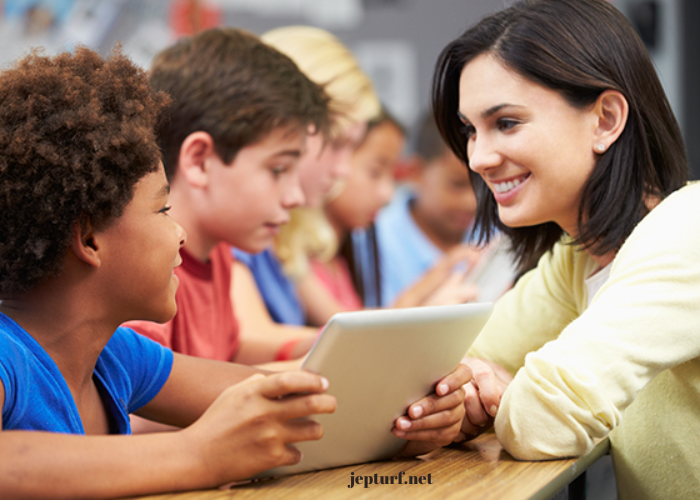Education has been a cornerstone of human civilization for centuries. The traditional classroom, with its rows of desks, blackboard, and teacher-student dynamic, has been the standard model of education for generations. However, in recent years, there has been a significant shift in the way we approach education, driven by technological advancements and changing societal needs. The digital realm has become an integral part of education, transforming the way we teach and learn. This article explores the evolution of education from the classroom to the digital realm, examining the benefits, challenges, and future prospects of this transformation.
The Traditional Classroom
The traditional classroom, as we know it, has been the primary mode of education for centuries. It is characterized by physical spaces where teachers and students gather for face-to-face instruction. In this model, teachers play a central role as knowledge providers, and students are expected to absorb information, engage in discussions, and complete assignments within the confines of a physical classroom.
While the traditional classroom has proven effective for many learners over the years, it has its limitations. These limitations include:
- Limited Accessibility: Not everyone has access to quality education due to geographical barriers, socioeconomic constraints, or physical disabilities.
- One-Size-Fits-All Approach: Traditional classrooms often adopt a uniform teaching method, which may not cater to the diverse learning needs of individual students.
- Static Content: Educational materials in traditional classrooms are typically static and may become outdated quickly in rapidly changing fields.
- Lack of Flexibility: Traditional classrooms have fixed schedules and rigid structures, making it challenging for students to balance education with other commitments.
The Digital Revolution in Education
The advent of the digital era has brought about a revolution in education. The integration of technology into teaching and learning processes has opened up new possibilities and transformed the educational landscape. Several key elements have contributed to this evolution:
- Online Learning Platforms: The rise of online learning platforms, such as Coursera, edX, and Khan Academy, has made education more accessible to people worldwide. These platforms offer a wide range of courses and allow learners to study at their own pace.
- Blended Learning: Blended learning combines traditional classroom instruction with online components. This approach provides students with the flexibility to access course materials and resources online while still benefiting from in-person interactions with teachers and peers.
- Digital Resources: The availability of digital textbooks, multimedia content, and educational apps has enriched the learning experience. These resources offer interactive and engaging ways to acquire knowledge.
- Virtual Reality (VR) and Augmented Reality (AR): VR and AR technologies have started to be incorporated into education, providing immersive experiences that can enhance understanding and retention of complex subjects.
- Personalized Learning: Adaptive learning algorithms and analytics tools help educators tailor instruction to the individual needs and learning styles of students, making education more effective.
Benefits of the Digital Realm in Education
The shift from the classroom to the digital realm has brought numerous benefits to education:
- Accessibility: Online education has broken down geographical barriers, allowing people from remote areas or different countries to access quality education. This is particularly significant for individuals who cannot attend traditional classrooms due to physical disabilities or other limitations.
- Flexibility: Digital education offers flexibility in terms of scheduling and pacing. Students can learn at their own pace, balancing their studies with work or other commitments.
- Diverse Learning Resources: The digital realm provides access to a vast array of learning resources, from video lectures and interactive simulations to discussion forums and e-books. This diversity caters to various learning styles and preferences.
- Cost-Effective: Online courses are often more affordable than traditional classroom-based programs, making education more accessible to a broader demographic.
- Self-Paced Learning: Learners have the autonomy to choose when and how they study, which can lead to a more personalized and effective learning experience.
Challenges and Concerns in the Digital Realm
Despite the many advantages of digital education, it is not without its challenges and concerns:
- Digital Divide: While digital education has made learning more accessible, the digital divide persists. Many individuals, particularly those in low-income or rural areas, lack access to reliable internet connections and the necessary devices.
- Isolation: Online learning can be isolating, as it often lacks the social interactions and community found in traditional classrooms. Loneliness and a sense of detachment from the learning process can be detrimental to some students.
- Quality Assurance: The proliferation of online courses and educational platforms has raised concerns about the quality of education. Not all online programs are equal, and ensuring the credibility and effectiveness of online education can be challenging.
- Digital Distractions: The digital realm is rife with distractions, from social media to email notifications. Maintaining focus and discipline while studying online can be difficult for some learners.
- Tech Literacy: Not all students are equally proficient in using digital tools and platforms. Those with limited tech literacy may struggle with the technical aspects of online learning.
- Security and Privacy: Protecting sensitive student data and maintaining privacy in the digital realm is an ongoing concern, with the potential for data breaches and misuse.
The Future of Education in the Digital Age
As technology continues to advance and society evolves, the future of education in the digital age is likely to undergo further transformation. Here are some key trends and possibilities:
- Hybrid Models: The integration of online and in-person learning is likely to become more commonplace, allowing for a more versatile and personalized educational experience.
- Artificial Intelligence (AI): AI-driven education will play a more significant role in providing personalized recommendations, automating administrative tasks, and improving assessment methods.
- Virtual and Augmented Reality: VR and AR technologies will become more sophisticated, providing immersive learning experiences across various disciplines.
- Global Collaboration: Online education will facilitate international collaboration among students and educators, fostering diverse perspectives and cross-cultural learning.
- Skill-Based Learning: The focus of education may shift towards equipping students with practical skills and competencies required in the modern job market, emphasizing lifelong learning.
- Continuous Learning: The concept of education as a one-time event may fade, and continuous learning throughout one’s career could become the norm.
Conclusion
The evolution of education from the traditional classroom to the digital realm represents a significant shift in how we approach learning and knowledge acquisition. While the digital realm offers unparalleled accessibility, flexibility, and a wealth of resources, it also presents challenges related to access, quality assurance, and social isolation.
The future of education in the digital age holds immense promise, with emerging technologies like AI, VR, and AR poised to revolutionize the learning experience. To maximize the benefits and address the challenges, it is crucial for educators, policymakers, and society as a whole to adapt, invest in infrastructure, and prioritize the development of digital literacy and skills.
As we continue to navigate the ever-changing landscape of education, it is essential to strike a balance between the traditional classroom and the digital realm, creating a hybrid model that leverages the strengths of both approaches. Ultimately, the goal is to provide accessible, high-quality education that empowers individuals to thrive in the fast-paced, knowledge-driven world of the 21st century.



